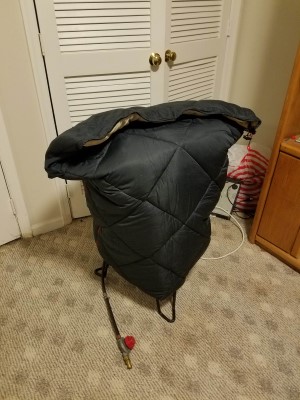Dale Gauthier
Active Member
- Joined
- Feb 27, 2019
- Messages
- 34
- Reaction score
- 6
Hi all, got 3 batches behind me. 2 BIAB and 1 extract. So still very green!
Following my latest recipe, I place my grain bag in the kettle at 165 degrees F and allow the wort to come down to 153 degrees F. Im supposed to kill the burner to let it rest for 60 min.
Question: Should I relight the burner if the temp falls too much? Is 10 degrees too much? I just wasn’t sure if I should pop the burner on for a minute to keep the temp up. OR should I let the temp fall so the mash enjoys a range of temperatures?
Thx so much!
Hd.
Following my latest recipe, I place my grain bag in the kettle at 165 degrees F and allow the wort to come down to 153 degrees F. Im supposed to kill the burner to let it rest for 60 min.
Question: Should I relight the burner if the temp falls too much? Is 10 degrees too much? I just wasn’t sure if I should pop the burner on for a minute to keep the temp up. OR should I let the temp fall so the mash enjoys a range of temperatures?
Thx so much!
Hd.


 )
) 


